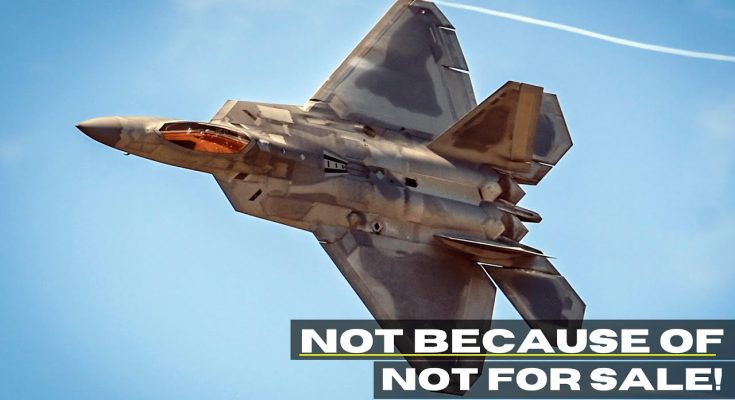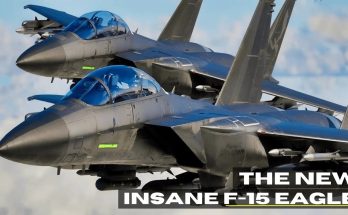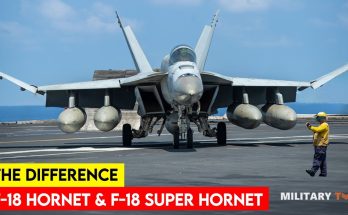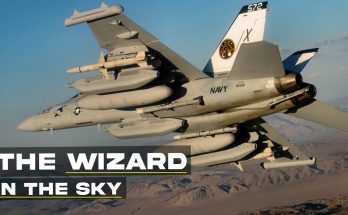The F-22 Raptor, developed by Lockheed Martin for the U.S. Air Force, is widely regarded as one of the most advanced fighter aircraft ever made. Its stealth capabilities, superior agility, and advanced avionics make it a formidable force in air combat. However, despite its cutting-edge technology, the F-22 Raptor is not available for export to other countries. There are several key reasons why the U.S. has imposed strict export restrictions on the F-22 and why other nations can’t fly it.
1. National Security and Technology Control
The primary reason other countries can’t fly the F-22 Raptor is the sensitive technology incorporated into the aircraft. The F-22 is packed with advanced systems, particularly in the areas of stealth, radar evasion, and sensor fusion, which give it an overwhelming edge in combat. These capabilities are considered a matter of national security for the U.S., and the U.S. government has gone to great lengths to protect this technology from falling into the wrong hands.
The stealth coating and the radar-absorbing materials on the F-22, for example, are crucial components that make the aircraft nearly invisible to radar. Additionally, the avionics, including its AN/APG-77 AESA radar, sensor fusion, and communication systems, represent some of the most advanced systems in military aviation. Allowing other countries to acquire this technology could weaken the U.S. military’s technological advantage and potentially compromise its strategic position.
2. The 1998 Arms Export Control Act
In 1998, the U.S. Congress passed the Arms Export Control Act (AECA), which prohibits the sale of certain high-tech military aircraft to foreign countries. The F-22 Raptor was specifically excluded from being exported due to the advanced nature of its stealth technology and classified avionics. This was a deliberate move to ensure that the most sensitive U.S. military capabilities remained exclusive to the U.S. Air Force.
The law mandates that foreign countries must meet stringent requirements, such as the protection of technology, ensuring that sensitive information is not shared with adversarial nations. The F-22 is designed with numerous features that are highly classified, and the U.S. government has maintained its stance that sharing this technology with other nations would pose a significant risk to national security.
3. U.S. Air Force’s Strategic Advantage
The F-22 Raptor was created specifically to maintain air superiority in the most contested environments. Its combination of stealth, supercruise (the ability to fly at supersonic speeds without using afterburners), and advanced avionics makes it a critical component of U.S. military dominance. By keeping the F-22 exclusively within the U.S. Air Force, the U.S. ensures that its air superiority remains unmatched, particularly in regions where its military faces significant threats.
The F-22’s strategic value is directly tied to its exclusivity. Should foreign nations acquire the F-22, there is a risk that the balance of power could shift, potentially enabling adversaries to develop countermeasures or tactics specifically designed to counter the F-22’s unique capabilities. The U.S. government has consistently argued that it cannot afford to dilute this technological advantage, especially when competing with emerging adversaries.
4. Foreign Relations and Strategic Concerns
While many countries have expressed interest in purchasing the F-22, including key U.S. allies like Japan, Australia, and Israel, political considerations also play a significant role in the export ban. Selling such a powerful aircraft could have unintended consequences, such as altering the balance of power in certain regions or enabling hostile states to acquire advanced capabilities. For example, providing a foreign power with the F-22 could indirectly aid their regional adversaries, or result in technology leakage, potentially compromising the effectiveness of the aircraft.
Furthermore, the U.S. also has concerns over the potential resale of technology. If a third-party nation were to sell or transfer F-22 technology to another country, it could significantly compromise U.S. national security interests. For this reason, the U.S. has been cautious about sharing the F-22 with any foreign nation, even those with close strategic alliances.
5. Cost and Production Limits
Another practical issue contributing to the F-22’s restricted export status is its limited production. The U.S. built only 187 F-22 Raptors before production was capped in 2009, mainly due to its high cost (approximately $150 million per unit) and the decision to focus on the more affordable F-35 Lightning II for international sales. Given the limited number of F-22s available, the U.S. military has prioritized its own needs, leaving little room for export.
Additionally, the F-22’s complex maintenance requirements and the associated costs make it less suitable for many countries, which would require significant resources and infrastructure to operate and sustain the aircraft over its lifespan.
Conclusion
The F-22 Raptor’s cutting-edge technology, national security considerations, legal restrictions, and strategic value ensure that it remains off-limits for export. While other nations have expressed interest in acquiring the F-22, the U.S. government has made it clear that the aircraft is essential to maintaining air superiority and that sharing it with foreign nations could pose a risk to national security. As a result, the F-22 remains one of the most exclusive and technologically advanced fighter jets in the world, available only to the U.S. Air Force.



